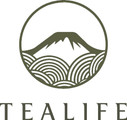The Complete Guide to Kyobancha
The distinct smoky smell might shock at first but is pleasantly addictive. Dive into this "everyday tea" of Kyoto.
This article was last modified December 20th, 2021. by Yuki
Introduction To Kyobancha - What is it?
Kyobancha written in Japanese
The taste and smell of Kyobancha
A cup of Kyobancha
Nutrients and Uses
How to prepare Kyobancha
There are 2 ways to prepare a Kyobancha.
One using a kettle, and the other is using a Kyusu or Dobin (Teapot) similar to other Japanese tea. Kyobancha can be enjoyed both hot or cold.
Preparing Kyobancha using a Kettle (or a pan)
-
Pour about 2 - 3 Liters of water into a Kettle
-
Boil the water
-
Add about 40g of Kyobancha leaves into the Kettle
-
Continue to boil for about 2 minutes
-
Remove the tea leaves, and enjoy
Preparing Kyobancha using a Kyusu or a Dobin (Teapot)
-
Break down the leaves a little to make it seep easier
-
take a large Kyusu or Dobin, add about 10 g of leaves
-
take boiling water and fill the Kyusu or Dobin
-
Let it seep for 10 minutes, and enjoy
Preparing Kyobancha in a Dobin
How Kyobancha is Made
Summary
I hope this article is enough to get you interested in at least trying Kyobancha out!
It may be during your next trip to Kyoto, or if you can't wait, you can always check it out at our online shop!
Yuki
Yuki is the Editor-in-Chief AND Community Manager at Tealife. He bleeds Japanese Tea and loves being a part of the Japanese Tea journey of others. Writes, does events, conducts tasting sessions, drinks, drinks and drinks tea! Easily accessible - hit him up on whatsapp (+65) 85882980.
